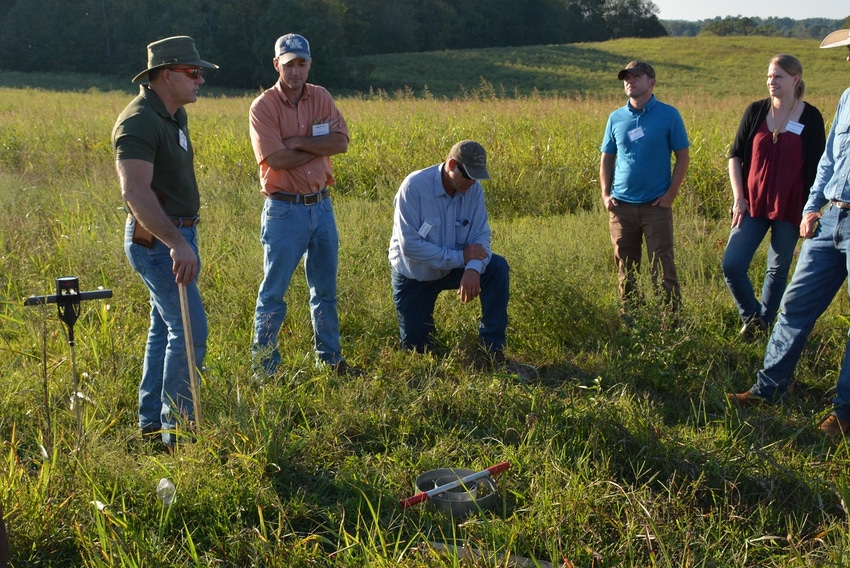
To accomplish the collective land and forage improvement that is among the great rewards from well-managed grazing, there are several principles you must understand and use.
Among those, of course, are complete plant recovery, adequately short grazing periods, and finding the right blend of animal performance and forage management techniques and goals. But a big part of successful adaptive grazing management grows out of creating in yourself an adaptive mind.
Three principles to help you do that are taught by Allen Williams, himself an accomplished grazier who consultants with farmers and ranchers across the nation. Williams lists these principles as compounding, diversity and disruption.
1. The principle of compounding
Williams says the important idea behind compounding is that nothing in life happens in isolation from other things. In fact, everything you do and everything that happens actually has multiple effects, many of which tend to be much larger and they compound into several outcomes. Put another way, you never get a single outcome from making a change, you get several or many changes.
Williams adds these effects are never neutral, but always either positive or negative or some blend thereof. He also says these effects may be "cascading," meaning they lead from one state to another in a chain of outcomes. This is the essence of Allan Savory's description of "holism," which helped lead to his emphasis on holistic management.
Williams has written how practices such as set-stock grazing, continuous grazing, slow rotations, and even high-stock-density grazing practices, in which the same methods are employed every day without any significant alterations, can lead to negative consequences. Commonly these include seriously compacted soil, poor soil aggregate layer, significantly reduced soil water infiltration rates, reduced plant species diversity and complexity, poor soil microbial population diversity and biomass. In turn, this leads to increased reliance on fertilizers, herbicides, and other chemicals, increased reliance on supplementation, increased costs of production, and decreased net profits, he says.
Of course, if you're a regular reader of Beef Producer over the years you realize that well-managed grazing produces exactly the opposite. This is what Williams would call a positive set of compounding and cascading effects.
2. The principle of diversity
Stated simply, diversity builds productivity and resiliency.
Williams says, "In my experience in working with several thousand farmers and ranchers across a wide variety of environments and landscapes, I have found that plant species complexity and diversity are critical to building positive compounding and cascading benefits."
Walt Davis and others have preached this message for about 30 years now, yet the majority of those in our land-grant colleges and most producers still think in terms of monocultures. This is outdated methodology.
Williams says he has concluded all pastures or rangeland need to have the three primary plant classes represented: Grasses, legumes and forbs. Further, he recommends multiple species of each.
He notes several advantages that compound and cascade from the principle of diversity.
First, varied species of soil microbes and mycorrhizal fungi generally are tied to specific species of plants, although they share nutrients generously across lines, and these varied species have differing abilities to collect soil nutrients. In turn, these underground livestock are the method by which the native prairie and forests feed themselves richly without added fertility.
Next, greater complexity and diversity in plant and subsoil species result in greater numbers of plant secondary and tertiary chemical compounds. These have a profound impact on animal health, plant health, and human health, Williams says. Among other things, they are designed to help plants protect themselves from disease and pests, and they also feed an array of soil microbes, produce medicinal and anti-parasitic benefits in livestock, and provide human health benefits.
Third, greater diversity creates habitat for birds and insects, which in turn speeds up and builds the cycle of life and creates more predators to eat the pest species. This includes earthworms and dung beetles, the value of which should not need explanation at this point in history.
Fourth, a plethora of diversity creates a wide variety of plant growth rates and maturities and extends the grazing season. If you think in terms of growth curves, diversity lengthens the growth curve over a much longer period of time, and also thereby normally produces more forage, as well as more quality forage.
As Williams explains, "While some species may be in a distinct reproductive phase, with highly lignified plant material and lots of seedheads, when you dig down through the sward you will find a multitude of other plants that are still quite vegetative and nutritious."
Graziers who have operated several years with well-managed adaptive grazing often report having green material deep in the plant canopy well into the winter, for example. With good planning and management, they also should have plenty of brown, dry plant material left to get through the spring flush when new forage is far too high in protein and too low in energy.
3. The principle of disruption
Nature is full of disruption and chaos. Every year is different. Every rainfall event is different. Temperature changes are widespread and unpredictable. Grazing patterns and behaviors of the large herds of ruminants that once roamed all the great grasslands were highly varied.
Williams says this disruption has many positive effects. It taps the latent seed bank to create diversity and complexity and diversity in plant species, and it builds resiliency into our soils and farms. Put another way, nature is accustomed to all these variations and responds with vigor.
Therefore, Williams says, the key for managers is to not do things the same way every time. This is what Beef Producer blogger and columnist R.P. Cooke calls "boom and bust," and what others call creating chaos.
About the Author(s)
You May Also Like




